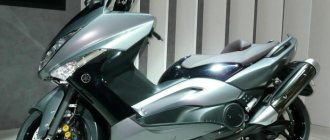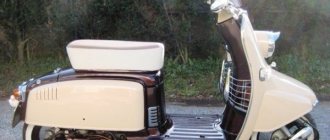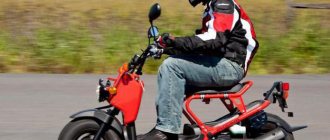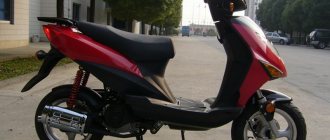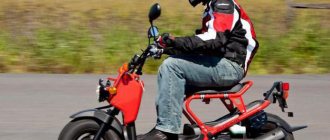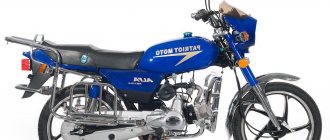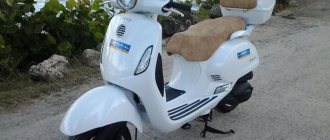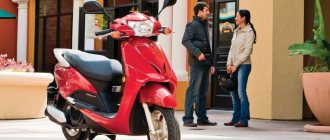Yamaha Cygnus X 125 scooter Yamaha Jog scooters Yamaha Jog RR scooter Yamaha Jog C scooter Yamaha Jog Z scooter Yamaha Super Jog Z scooter Yamaha Jog Z scooter NextZone Yamaha Jog Aprio scooter Yamaha Jog Artistic Spec scooter Yamaha BWs scooter Honda Cub scooters Honda Dio scooters Honda scooter Dio AF 18 Scooter Honda Dio AF 27/28 ZX/ZR Scooter Honda Dio AF 34/35 Scooter Honda Dio AF 34 Cesta Scooter Honda Dio AF 56/57 Scooter Honda Dio AF 62, AF 68 Scooter Honda Dio Z4 AF 63 Scooter Honda Tact AF 24 Honda Tact scooter AF 30/31 Honda Zoomer scooter AF 58 Honda Lead scooter Honda Giorno Crea scooter AF 54 Honda Giorno scooter AF24 Honda Gyro Canopy scooter Huatian Spider 2 scooter Baotian Tanco 50 scooter GX Stinger scooter SYM Jet EuroX scooter LIFAN ZID LF50QT scooter -8A
The files are stored on LetItBit hosting and they can all be downloaded for free. I get income from every download. If you also have a website, you can also start making money with LetItBit.
Keeway
Keeway F-act 125 scooter user manual (Microsoft Word, 508.5 Kb, in Ukrainian)
Keeway F-act 50 scooter user manual (Microsoft Word, 434.5 Kb, in Ukrainian)
Keeway Arn 50 scooter user manual (Microsoft Word, 3.8 Mb, in Ukrainian)
Keeway Hurricane 50 scooter user manual (Microsoft Word, 420.5 Kb, in Ukrainian)
Test drive of the Keeway Speed 150 scooter (PDF, 407 Kb)
Test drive of the Keeway Matrix 50 scooter (PDF, 480 Kb)
The appearance of the scooter - we study the appearance of the Yamaha BVS
Yamaha BWS scooter is distinguished by its attractive appearance and will not leave passing people indifferent. Despite its massiveness, the scooter looks light and ergonomic. The charismatic design will be of interest even to the discerning lover of “breezy” trips, and the additional off-road function makes it suitable even for driving in rural areas.
The plastic elements of the case are made of the most modern and high-quality materials. The parts are perfectly matched to each other and therefore it seems as if the scooter was cast from one piece of material. Everything is done conscientiously - reliably and efficiently. Also, it should be noted that there is a luggage compartment located directly under the “saddle” of the scooter. Its spaciousness allows you to store helmets or use the compartment to transport any other things and items, for example, personal items or repair tools.
When you first look at the Yamaha BVS , the slightly convex headlights immediately catch your eye. The presence of protective arches and shields gives the model an aggressive, if not “bestial” appearance, which even experienced bikers can envy.
Reliable "Japanese" made in China
Until 2005, production of this model was located only in Japan. Now the Yamaha BWS 100 is assembled in Chinese factories. However, this did not reduce the popularity of the model. Engines and carburetors from the Taiwanese company Mikuni are equally economical, reliable and easy to maintain. And for other components and assemblies of the scooter, only high-quality components from time-tested manufacturers are used.
A comfortable seat and sufficient engine power allow you to move on it quite confidently both when traveling around the city and in minor off-road conditions.
VVA technology on Yamaha BWs
The engine still has a forced air cooling system, an injection power system, and a single overhead camshaft, but is now equipped with VVA technology, which changes the valve opening phases depending on the engine speed. The VVA system provides linear acceleration, stronger low-end thrust and more power at high. The power from the engine is transmitted to the rear wheel through a continuously variable transmission with a V-belt and a centrifugal clutch.
Chassis and ergonomics of Yamaha BWs
The chassis consists of a tubular steel frame with a classic scooter layout - with a footrest and a hidden gas tank. The seat height has increased slightly and is 78.5 cm versus the previous 78 cm, but the narrow shape of the seat makes it easy to hold the scooter at stops.
The 33mm telescopic forks have 81mm of travel and the rear suspension is 79mm. Yamaha BWs are equipped with a combined braking system in which the rear brake lever on the left grip transmits some of the braking force to the front caliper, but the lever on the right handlebar controls exclusively the front brake.
According to Yamaha, the underseat bag can accommodate a full-face helmet, but the scooter is additionally equipped with two holders for mounting helmets in the parking lot. There is a USB-A socket in the glove box for charging gadgets.
Other features of the scooter include asymmetrical headlights with adjustment, an LCD display and a central stand. According to Yamaha, the scooter consumes 2.3 liters per 100 km, which means a range of 260 km per fill-up.
Yamaha BWs 50/100 scooter review
Yamaha is one of the few Japanese companies that produces two-seater scooters. The well-known Japanese 50cc scooters BWs were the first in the line of these unique SUVs. Excellent cross-country ability, simple controls, good maneuverability and a fairly large base, which are the basis for the design of BWs scooters, quickly attracted the attention of buyers.
Scooters immediately entered the car market, 100 cc BWs models, practically no different from BWs 50 scooters. They have the same suspension, wheels, brakes, transmission, carburetor and engine starting system.
The main difference between these models is the volume of 50 and 100 cm?.. Engine type B109E 2-stroke, single-cylinder. Accordingly, their power and efficiency parameters are different. For the BWs 50 scooter, the consumption of the scooter does not exceed 1.6 liters per 100 km, for the BWs 100 the consumption can be 3.1 liters. The maximum power of the 50 cc engine is 6.8 hp, and the 100 cc engine is 11 hp.
When reviewing the BWs 50/100 scooters, we can note that they have the features of typical SUVs:
- all weather tires
- powerful front brake
- seat compartment for helmet
- double headlights.
The current review of scooters from the BWs model range does not please Russian motorcycle enthusiasts, since Yamaha has not been producing 50/100 models lately. Production has been reoriented to the production of more powerful SUVs, with a volume of 125cc, which are not yet supplied to Russia.
Technical characteristics of scooters BWs 50/100:
| Length — 1890 mm Width — 660 mm Height — 1115 mm Seat height — 765 mm Base — 1270 mm Ground clearance — 119 mm Fuel tank — 7.0 l Oil tank — 1.2 l Front suspension — telescopic, travel 70 mm Rear suspension — pendulum, travel 55 mm Disc front niy brake —150mm Rear drum brake — 130mm Front tire — 120/90R10 Rear tire — 130/90 R10 | Engine—B109E CDI Cooling—air Volume—50/100cm? Cylinder - diameter 40/52mm Piston stroke - 39.2/47.6mm Compression - 7.3 Max power - 6.8/11hp at 6500 rpm Torque - 0.71/1.1 N*m at 6000 rpm Max speed - 60/80 km/h Separate lubrication system VM16SS carburetor Electric starter kick starter CVT Gross weight - 95 kg |
BWs 50/100 scooters were produced in Japan until 2005, then production was transferred to China.
Dealers set prices for Japanese scooters depending on technical condition, color, mileage and warranties. In the fall of 2012, the average cost of a scooter manufactured from 1995 to 2005 is 60 thousand rubles for models with a volume of 50 cm? and 75 thousand rubles for models with a volume of 100 cm?.. Chinese new BWs 100, the latest years of production, are sold at a price of 88 thousand rubles and more.
Tuning Yamaha BWS 100
Any motorcycle owner wants his “two-wheeled friend” to look stylish and individual. Now the market offers a large number of accessories for the simplest external tuning of the Yamaha BWS 100, which does not require special technical training:
- rear view mirrors of various shapes;
- steering wheel handles of various colors;
- direction indicators of original design;
- rear side trims;
- front fairing with integrated headlights and so on.
Well, advanced and savvy “riders” (especially those who have a Yamaha – not their first scooter) engage in technical tuning to improve acceleration dynamics, maximum power and other technical indicators. Some, even losing the manufacturer’s warranty, immediately (before break-in and first maintenance) replace the standard variator with a set of Malossi Multivar 2000 or Top Racing MV1.
Those who are not satisfied with the fuel injection system, instead of the stock VM16SS carburetor from Mikuni, install a PHBG from Dellorto on the scooter.
Replacing the standard exhaust system with stylish chrome products from Tecnigas or Turbo Kit not only speeds up the “start from a standstill”, but also significantly increases the attractiveness of the scooter’s appearance.
In general, the field of activity for fans of tuning their Yamaha BVS is wide and varied. And it’s not difficult to overclock it to “one hundred” or more (with certain technical skills and appropriate capital investments).
Advantages and disadvantages of the model
Among the advantages of the Yamaha bws 50/100 models, it is worth noting good cross-country ability, reliability, lack of engine overheating, as well as a comfortable fit for people of average and short stature. The cost of a scooter is small - only 50-60 thousand rubles .
Despite the good technical characteristics of the Yamaha BVS, some of its shortcomings spoil the impression of the equipment as a whole. For example, in recent years it has been very difficult to find suitable spare parts for this model, and high gas consumption will significantly complicate a long trip.
Detailed review
It’s nice to see when speed characteristics and excellent cross-country ability are delicately combined in one scooter. 100 cc allows you to fully experience the speed, leaving cars behind in traffic jams of the “concrete jungle”. The scooter is very maneuverable, it is easy and pleasant to drive. Even a small child can handle the controls.
Don't forget about the suspension, which has undergone long-term and high-quality work. It is necessary to note its travel: at the rear it is 55 mm, and at the front 70 mm. Delving deeper into the shock absorption system, it is necessary to say the following: all loads, vibrations and shaking from the rear are “absorbed” by the pendulum suspension, which is articulated with the engine. At the front, a standard telescopic fork is used.
A reliable braking system is one of the key positions in any vehicle, and a scooter is no exception. In this case, the developers installed disc and drum brakes at the front and rear, respectively (with a diameter of 150 mm and 130 mm).
Let's move on to the design of the sensational model. The designers have done everything possible to distinguish the Bws 100 from all other scooters in this class. They succeeded in this to the fullest. Looking at the Yamaha from the front, a non-standard solution immediately catches your eye - headlights for illumination at night. This component is made in a non-standard format; it is double. This only had a positive effect on the quality of consecration. We can safely say that the design is completely sporty. This is indicated by smooth, interesting shapes. In addition, it is worth highlighting the sports wheels and the appropriate fit. The “Japanese” is not only truly nimble, but also quite practical. There is a small luggage area at the rear, and there is a trunk under the seat. Below the steering wheel there is a glove compartment. Long trips are pleasant and comfortable with a soft, 2-seater seat. There are mirrors on the sides to control movement. A 100 cc scooter from Yamaha is an ideal purchase for young and energetic people who love fast riding.
Parameters of the scooter bws yamaha
To have a general idea of what a scooter looks like, let's study its main characteristics:
- Model length – 1.89 m;
- Width – 0.66 m;
- Height – 1.15 m;
It should be noted that the rear wheels are slightly larger than the front wheels - this parameter makes the scooter more stable and comfortable to drive. The engine is started by a starter and a kickstarter.
The cost of the scooter will depend directly on the configuration, type of painting, type of engine and other parameters that you specify when purchasing.
Technical characteristics of the model bws yamaha
Yamaha BVS scooter was equipped with a 100 cc engine. Working together with the variator allows the scooter to accelerate very quickly from a standstill. The carburetor engine is capable of delivering power from 9 to 11 hp, which is quite enough for urban realities. The manufacturer also presented a low-power model, the engine capacity of which is 50 cubic meters, capable of producing about 6.5-7 hp. The rear suspension is of the pendulum type, which is equipped with a drum mechanism. A disc brake is installed at the front. The front suspension is classified as telescopic.
For off-road driving, Yamaha specialists equipped the model with everything necessary:
- Two headlights capable of illuminating the road over a very long distance;
- Hard front brake;
- All-season tires that surprise with high-quality grip on any road surface, be it asphalt or dirt.
It is worth noting such a factor as fuel consumption: on a 100 cc engine, the scooter will consume about 3 liters of fuel, while on a 50 cc engine it will consume only 1.5-1.6 liters per 100 km. The sizes of the fuel tanks also differ - on the more powerful model there is a tank with a volume of 7 liters, on the low-power model - 4 liters.
